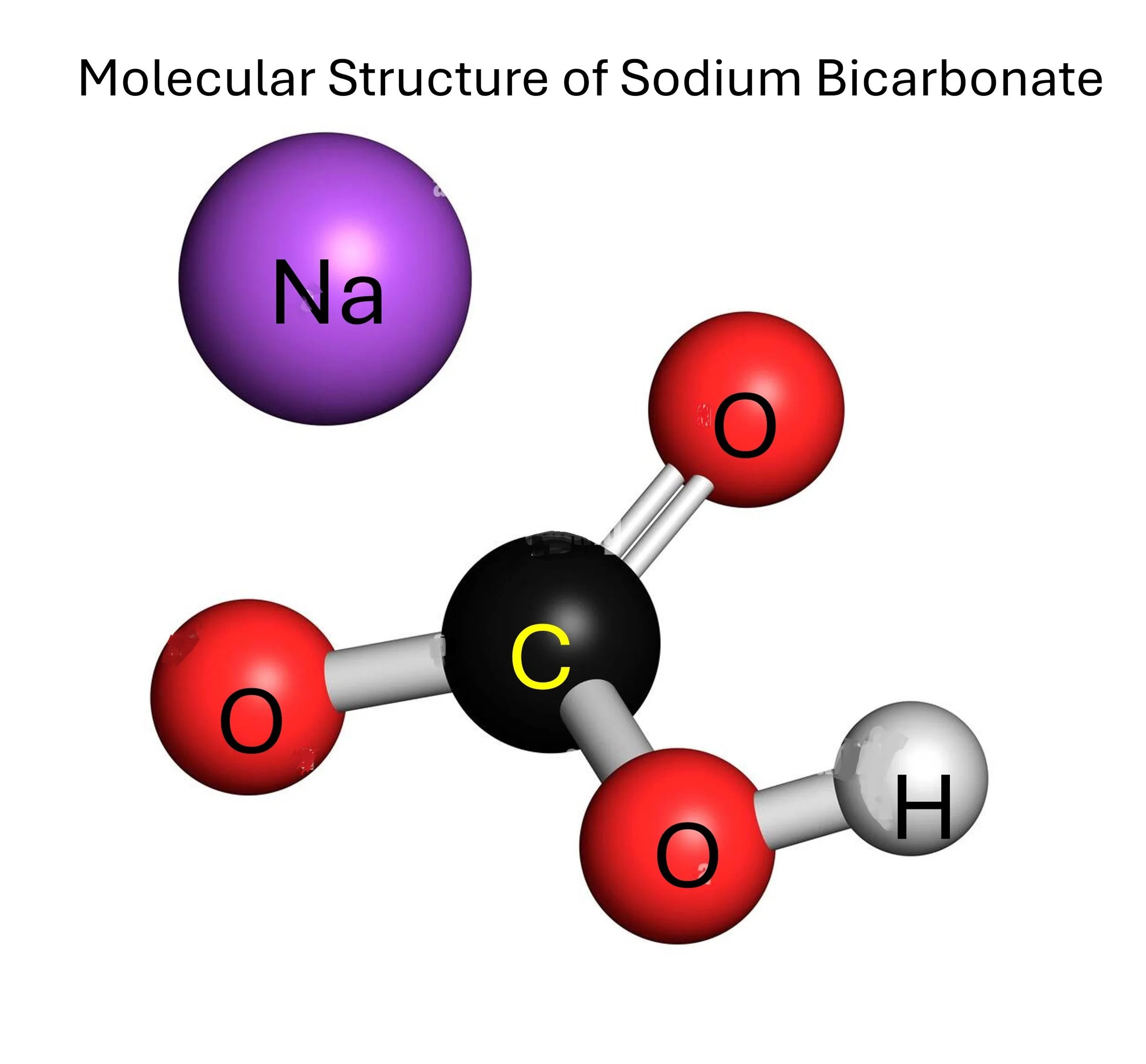What is Sodium Bicarbonate Made Of?
Sodium bicarbonate is like a team of three different parts that work together:
Sodium (Na): Think of this as a helper atom that keeps everything together. It’s like the “glue” holding the team.
Hydrogen (H): This is a small part of the molecule that’s attached to the "bicarbonate group."
Bicarbonate (HCO₃): This is a group of atoms made of:
One Carbon (C): The center of the group, holding everything together.
Three Oxygens (O): These surround the carbon and make the group stable.
One Hydrogen (H): Stuck to one of the oxygens.
How Do These Parts Work Together?
Sodium bicarbonate looks like a tiny building. The sodium (Na) hangs out next to the bicarbonate group (HCO₃).
The bicarbonate group has one carbon in the middle, holding onto three oxygen atoms and one hydrogen.
What Does It Look Like?
Imagine:
A carbon atom in the middle.
Three oxygen atoms connected around it (like a triangle).
One hydrogen atom attached to one oxygen.
The sodium atom sits nearby but doesn’t directly touch the bicarbonate—it just keeps everything balanced.
Why Is It Special?
When baking soda meets something acidic (like vinegar), the sodium bicarbonate breaks apart, releasing bubbles of carbon dioxide gas. That’s what makes your cakes fluffy or your volcano science experiment explode!

